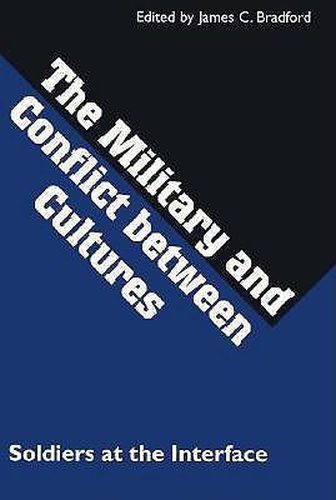Readings Newsletter
Become a Readings Member to make your shopping experience even easier.
Sign in or sign up for free!
You’re not far away from qualifying for FREE standard shipping within Australia
You’ve qualified for FREE standard shipping within Australia
The cart is loading…






For centuries Western military theory and practice focused on wars conducted in Europe among Europeans. Wars between the European powers and other peoples were thought to be unimportant by students of military affairs, and wars between non-Europeans were viewed as distant and irrelevant. Attention was focused on Great Power confrontations, and the many little wars fought throughout the globe were ignored or given short attention. As the twenty-first century approaches and the threat of war between the superpowers declines, our attention is drawn to conflicts between nations or ethnic groups with vastly different cultures. The United States, the last superpower, is divided in its motives to maintain its giant Cold War military structure or to create a new world police force that will react to and influence the outcome of intercultural conflict.
Brought together by James C. Bradford, these essays by prominent military historians cover three thousand years and five continents in treating various examples of intercultural interaction.
In his introduction, Roger Beaumont traces the evolution from Great Power conflicts to multinational and intercultural wars and examines in general terms the cross-cultural dimensions of warfare that have been heretofore largely ignored by military historians.
The first two essays look at examples of intercultural cooperation in warfare. John F. Guilmartin, Jr., describes the use of diverse cultural elements in armies from Xenophon’s Persians to the Hessians of the American Revolution. In a similar vein, Dennis Showalter examines the transference of European forms of warfare by regional military groups.
Along the military frontier of the American West, Robert M. Utley finds classic examples of simple cultures at odds with a technologically complex one. John W. Bailey presents the diverse styles of American commanders in the post-Civil War West and deals with the dichotomy between civilizing mission and uncivilized methods.
Richard W. Slatta reveals patterns in Argentina’s military and cultural subjection of its Indians and gauchos over three centuries. Douglas Porch studies the strategy and tactics employed by France in its conquest of northwestern Africa.
Carol Morris Petillo examines the American involvement in the Philippines, arguing that a half-century of military imperialism was a shaping experience for a new generation of military professionals. Finally, Robin Higham closes the book with a wide-ranging and impressionistic essay on intercultural command.
Scholars of military history as well as the layperson interested in cross-cultural issues and the study of warfare will find The Military and Conflict between Cultures to be a thought provoking collection of essays on an important topic–one which has become increasingly significant in the post-Cold War era
$9.00 standard shipping within Australia
FREE standard shipping within Australia for orders over $100.00
Express & International shipping calculated at checkout
For centuries Western military theory and practice focused on wars conducted in Europe among Europeans. Wars between the European powers and other peoples were thought to be unimportant by students of military affairs, and wars between non-Europeans were viewed as distant and irrelevant. Attention was focused on Great Power confrontations, and the many little wars fought throughout the globe were ignored or given short attention. As the twenty-first century approaches and the threat of war between the superpowers declines, our attention is drawn to conflicts between nations or ethnic groups with vastly different cultures. The United States, the last superpower, is divided in its motives to maintain its giant Cold War military structure or to create a new world police force that will react to and influence the outcome of intercultural conflict.
Brought together by James C. Bradford, these essays by prominent military historians cover three thousand years and five continents in treating various examples of intercultural interaction.
In his introduction, Roger Beaumont traces the evolution from Great Power conflicts to multinational and intercultural wars and examines in general terms the cross-cultural dimensions of warfare that have been heretofore largely ignored by military historians.
The first two essays look at examples of intercultural cooperation in warfare. John F. Guilmartin, Jr., describes the use of diverse cultural elements in armies from Xenophon’s Persians to the Hessians of the American Revolution. In a similar vein, Dennis Showalter examines the transference of European forms of warfare by regional military groups.
Along the military frontier of the American West, Robert M. Utley finds classic examples of simple cultures at odds with a technologically complex one. John W. Bailey presents the diverse styles of American commanders in the post-Civil War West and deals with the dichotomy between civilizing mission and uncivilized methods.
Richard W. Slatta reveals patterns in Argentina’s military and cultural subjection of its Indians and gauchos over three centuries. Douglas Porch studies the strategy and tactics employed by France in its conquest of northwestern Africa.
Carol Morris Petillo examines the American involvement in the Philippines, arguing that a half-century of military imperialism was a shaping experience for a new generation of military professionals. Finally, Robin Higham closes the book with a wide-ranging and impressionistic essay on intercultural command.
Scholars of military history as well as the layperson interested in cross-cultural issues and the study of warfare will find The Military and Conflict between Cultures to be a thought provoking collection of essays on an important topic–one which has become increasingly significant in the post-Cold War era